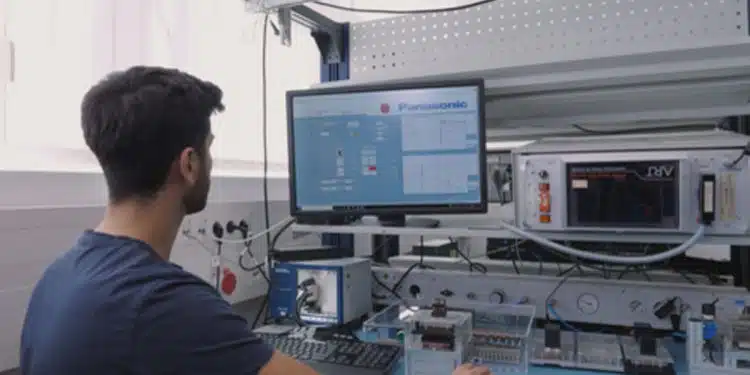Panasonic Industry Europe now offers technical support in its comprehensive relay test labs located in Germany. These labs are equipped with advanced technology and staffed by experienced technicians and engineers who ensure that every relay meets the highest standards of quality and reliability.
At its European headquarters in Ottobrunn and in Pfaffenhofen near Munich, Germany, Panasonic Industry has invested in two state-of-the-art technical laboratories to conduct rigorous tests and analysis, mainly for its broad portfolio of relays, but also for a wide field of the company’s other electromechanical products.
The equipment in the labs comprises of high-voltage, stress and long-term testing stations, high-speed camera analysis devices, leakage testers, temperature simulators, a fully equipped prototyping workshop and much more. If indicated, customers can book a visit to the labs and get support from Panasonic Industry’s technical relay experts if they have special requests and requirements beyond standard applications or have other questions, e.g. about particularly harsh operating conditions for their designs.
Although Panasonic Industry’s standard relay datasheets cover more than 80% of all applications, the paper can only cover a certain range of values and parameters, which mostly refer to worst-case scenarios, for example in terms of temperature conditions. But if for example a relay isn’t functioning as expected in a customer design, Panasonic Industry’s technical experts at the labs can investigate the cause. Their in-depth application analysis goes beyond testing the relay itself and provides valuable insights into any reasons for failure and helps customers resolve any design issues effectively.
Comments Bernd Prössner, Head of Relay Engineering at Panasonic Industry: “If customers for example are unsure whether the chosen relay can withstand high inrush currents, are having concerns about the potential impact of slightly higher operating temperatures in the long run or are encountering a field failure without understanding the underlying cause, our technical experts are equipped with all necessary test devices to investigate the issues in more detail – and to find individual and reliable solutions for our customers.”































